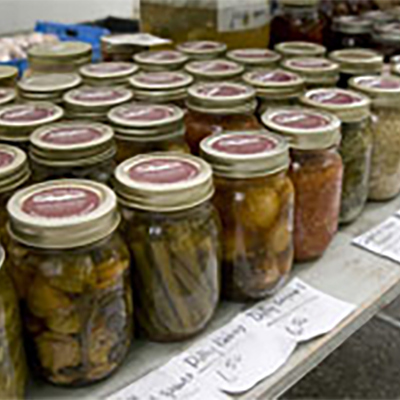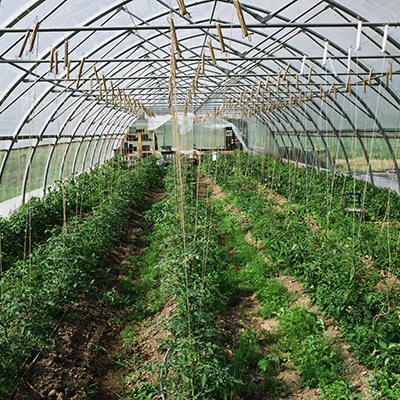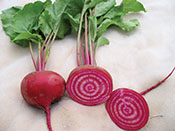Growing for Market in partnership with Johnny's Selected Seeds has created a library of expert information about growing and selling vegetables and flowers. Links in the article will take you to johnnyseeds.com.
Subscribe to Growing for Market for more great ideas about growing and marketing!
For more topics in the series, click on Market Farming Basics in the left column.

Record Keeping Key To Successful Farming
When you're new to farming, everything is so interesting and exciting that you may assume you'll remember every detail of what you are growing, where and when you planted it, and how well it performed. Veteran growers, however, know that the details start to fade quickly over the course of a busy season. That's why the most experienced and successful farmers keep careful records.Record keeping may seem like an unpleasant task at first, and some people have to force themselves to make time for it. But a sensible record keeping system does not need to be a burden and, in fact, can give you some much-needed time for rest and reflection throughout your day. The very act of keeping track of your activities gives you a better perspective on your work.
Systems run the gamut from a pencil and notebook to sophisticated online programs. Here are some ideas to get you started in developing the records that are most useful to you.
For certified-organic growers, there's a new online system called COG-Pro. It's designed to keep the records and produce the reports required by organic certification agencies. It also can be used by non-organic growers to track seed and plant purchases, and keep activity records such as fertilization and weeding. COG-Pro has the look of a spiral notebook, so it's easy and intuitive to navigate. And because it's a Web-based program, records are accessible from anywhere (you can even let your certifier look at your records remotely) and you don't have to worry about losing them to a computer crash, windstorm, spilled cup of coffee, or other on-site problems. The cost is $60 per year.
Ag Squared is another Web-based system that is still being tested but is expected to be released this year. It will have multiple features that will allow you to create a farm plan, schedule tasks such as planting dates, record activities, track inventory, and track harvests and sales. In the works: a mobile app that will let you input information from your phone. The program will be free initially.
While those systems are helpful because they prompt you to enter the types of information that many growers find valuable, anyone can create their own record keeping system with a spreadsheet program such as Excel or Numbers. And you don't have to be a spreadsheet expert to create something meaningful.
The simplest spreadsheets are simply lists that can be sorted in helpful ways. For example, you might create a spreadsheet that lists every variety of seed you purchased this year, where you bought it, and the amount you purchased. You can then sort your list by crop name so you have, say, all your tomato varieties listed together. You might also want to sort by seed company name next year when it's time to reorder seeds.
Even more helpful, you can add fields showing when the seed should be started, when the plants are transplanted, when the harvest begins and ends, yield, and any comments.
Graduating into slightly more complex spreadsheet use, you can set up a planning spreadsheet that uses formulas to schedule planting or harvest dates. Johnny's has several of these in the Grower's Library to help you get started. If you're not conversant with spreadsheets, here's a tip: Click on a field and then look in the formula bar at the top of the table; if a formula was used, you will see it displayed there. That will give you some insight into how to set up formulas. Learning how to use spreadsheets is an admirable goal for the off-season. The more adept you become, the more sophisticated your record keeping will be.
For financial records, many growers use the accounting program Quick Books. Make every product or variety you grow its own "Item" in QuickBooks. Once your products are entered as Items, be sure to use the Item names when creating an invoice or recording a bank deposit. If you're conscientious, you'll be able to tell at a glance how much money you made from every crop.
Finally, if you're not comfortable using a computer, you can still keep excellent, useful records on paper. Get a three-ring binder and fill it with paper, dividers and tabs to make a section for every crop you grow. Then write down everything you do every day, crop by crop. Start with your seed purchase, the source and quantity, the date you planted the seed and transplanted the plants. Note the date and time spent weeding, irrigating, fertilizing, controlling pests, covering with row cover, and so on. Write down your first harvest, record the weights or units of each harvest, and note the date of the final harvest. This information won't be as easy to analyze as a spreadsheet, but it will still help you make adjustments to your farm planning in the future.
Whatever system you choose, keeping good records will make you a better grower this year and in the future.
Visit Johnny's Selected Seeds for more free information about growing produce, herbs, cover crops and flowers.
• Subscribe to Growing for Market for the latest news and ideas.
Reprinted from JSS Advantage May 2011




 Among successful market farms, there is a trend toward diversification and away from specialization. As growers gain experience, they tend to add new crops and markets and extend their seasons. They find ways to maximize income from everything they grow and put all their land to good use.
Among successful market farms, there is a trend toward diversification and away from specialization. As growers gain experience, they tend to add new crops and markets and extend their seasons. They find ways to maximize income from everything they grow and put all their land to good use.
 August can be a busy month. Summer crops are at their peak and fall crops need attention. It's time to look ahead to fall and winter markets. Yet, it may still be so hot you just don't want to do anything! We'll suggest some practical ideas and, we hope, provide some encouragement to keep you going.
August can be a busy month. Summer crops are at their peak and fall crops need attention. It's time to look ahead to fall and winter markets. Yet, it may still be so hot you just don't want to do anything! We'll suggest some practical ideas and, we hope, provide some encouragement to keep you going. Insect pollination is essential to many vegetable and fruit crops, including tomatoes, squash, pumpkins, watermelons, blueberries, blackberries, apples, almonds, and many others. In the case of watermelons, there will be no fruit without pollination. Some vegetables don't require pollination to set fruit, but pollination by bees will result in larger and more abundant fruits. Nearly 75% of the flowering plants on Earth rely on pollinators to set seed or fruit, as well as one-third of our food crops, and most pollination is performed by honey bees, native bees, and other insects.
Insect pollination is essential to many vegetable and fruit crops, including tomatoes, squash, pumpkins, watermelons, blueberries, blackberries, apples, almonds, and many others. In the case of watermelons, there will be no fruit without pollination. Some vegetables don't require pollination to set fruit, but pollination by bees will result in larger and more abundant fruits. Nearly 75% of the flowering plants on Earth rely on pollinators to set seed or fruit, as well as one-third of our food crops, and most pollination is performed by honey bees, native bees, and other insects. 